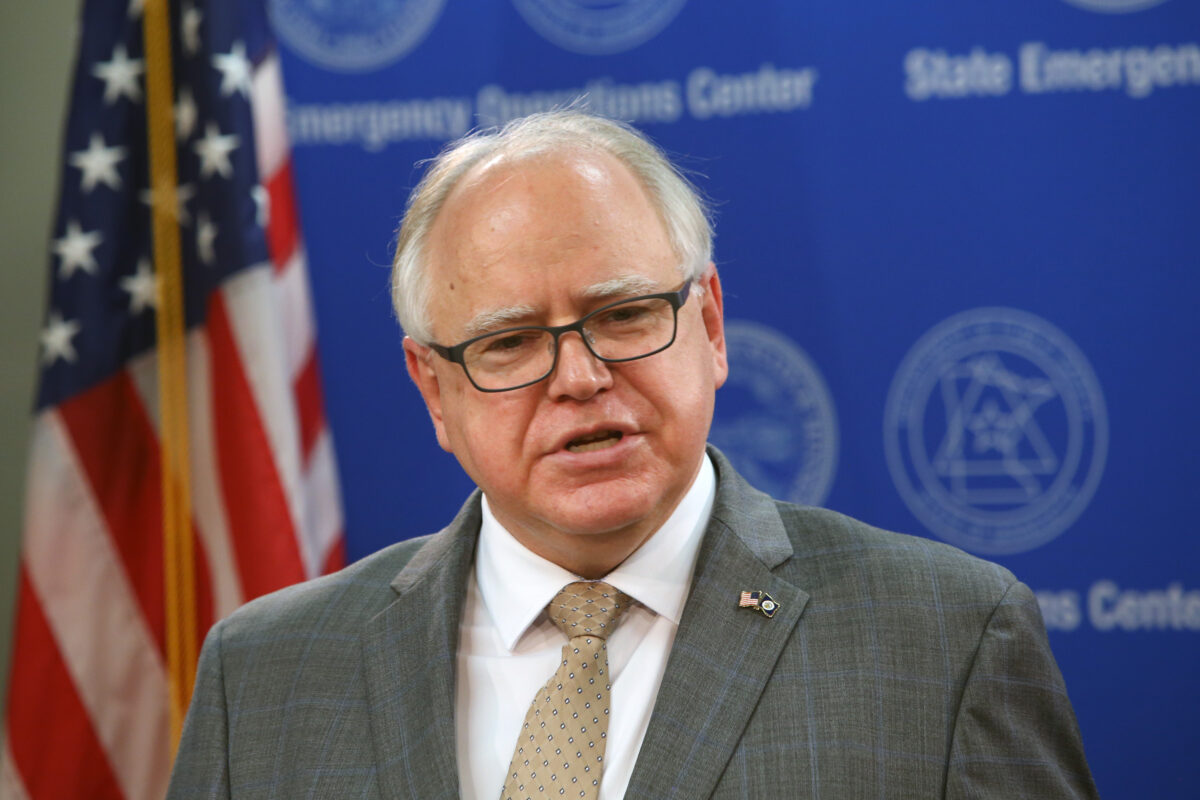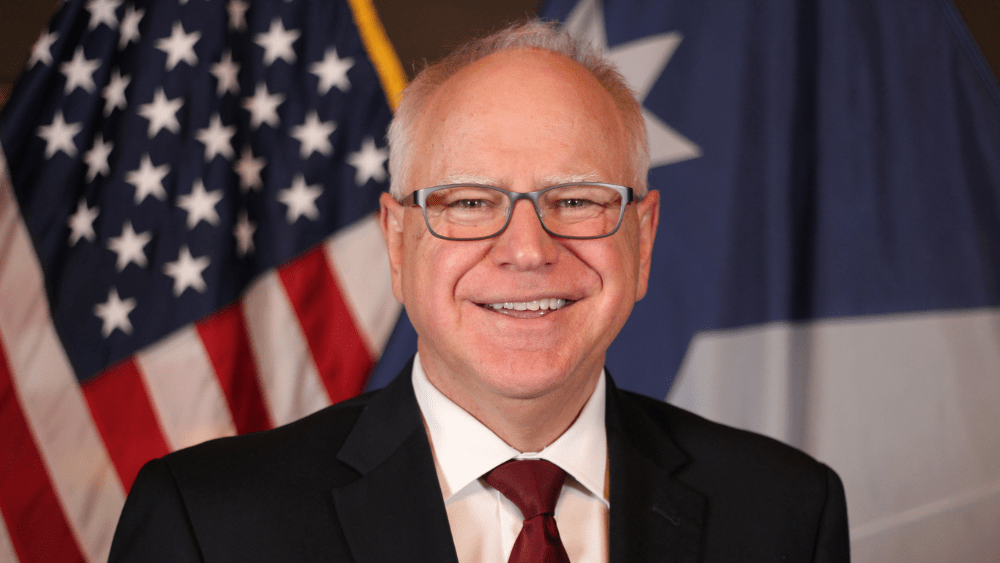Minnesota’s Current Political Landscape: Minnesota Tim Walz

Minnesota’s political landscape is characterized by a long history of competitive elections and a generally moderate political culture. The state has historically leaned Democratic, but recent years have seen a rise in Republican support, particularly in rural areas.
Dominant Political Parties and Key Issues
The two dominant political parties in Minnesota are the Democratic-Farmer-Labor Party (DFL) and the Republican Party. The DFL generally aligns with progressive values, emphasizing social welfare programs, environmental protection, and labor rights. The Republican Party, on the other hand, advocates for lower taxes, less government regulation, and a strong national defense. Key issues in Minnesota politics include education, healthcare, taxes, and economic development.
Strengths and Weaknesses of the Democratic and Republican Parties
The DFL enjoys strong support in urban areas, particularly in the Twin Cities metropolitan area. Their platform resonates with voters who prioritize social services, education, and environmental protection. However, the DFL faces challenges in rural areas, where voters often favor lower taxes and less government intervention. The Republican Party holds a strong presence in rural Minnesota, where their focus on economic growth and limited government appeals to many voters. However, the Republican Party struggles to gain traction in urban areas, where their policies on social issues and environmental regulations often clash with the values of many residents.
Role of Independent and Third-Party Candidates
Independent and third-party candidates have historically played a limited role in Minnesota politics. While they occasionally gain attention in local elections, they rarely pose a serious challenge to the dominant DFL and Republican parties in statewide races. However, independent candidates can sometimes influence the outcome of elections by siphoning votes away from major party candidates.
Key Political Challenges Facing Minnesota, Minnesota tim walz
Minnesota faces several key political challenges, including:
- Education: Minnesota has a long tradition of strong public education, but funding disparities between school districts and the increasing cost of education pose challenges.
- Healthcare: The state faces rising healthcare costs and challenges in ensuring access to quality care for all residents.
- Infrastructure: Minnesota’s aging infrastructure, including roads, bridges, and public transportation, requires significant investment.
- Economic Development: Maintaining a strong economy and creating jobs are crucial priorities for Minnesota, particularly in the face of global economic uncertainty.
Tim Walz’s Policies and Initiatives

Tim Walz, Minnesota’s current governor, has implemented a range of policies across various sectors, aiming to address the state’s challenges and improve the lives of its residents. These initiatives have focused on education, healthcare, and economic development, among other areas. This section will explore the key policy initiatives implemented by Tim Walz, evaluate their effectiveness, and discuss public perception and comparisons with previous governors.
Education Policy Initiatives
Tim Walz’s administration has prioritized education reform, focusing on increasing access to quality education and ensuring equitable outcomes for all students.
- Increased Funding for Public Education: Walz has consistently increased funding for public schools, aiming to reduce class sizes, provide more resources for teachers, and support early childhood education. This has been a significant policy shift from previous administrations, which had often faced budget constraints and limited funding for education.
- Focus on Early Childhood Education: Walz has championed early childhood education, recognizing its importance in setting a strong foundation for future academic success. This has involved expanding access to preschool programs and increasing funding for early intervention services.
- Support for Higher Education: The Walz administration has also focused on making higher education more affordable and accessible. This has included increasing funding for state colleges and universities, expanding financial aid programs, and implementing policies to reduce student loan debt.
The effectiveness of these policies is evident in the improved graduation rates and student achievement scores across Minnesota. Data from the Minnesota Department of Education shows a steady increase in graduation rates, particularly among minority students.
Healthcare Policy Initiatives
Tim Walz has made healthcare a key priority, focusing on expanding access to affordable healthcare and addressing the rising cost of healthcare.
- Expansion of Medicaid: Walz’s administration has expanded Medicaid eligibility, providing healthcare coverage to more low-income Minnesotans. This expansion has significantly increased the number of individuals with access to essential healthcare services.
- Prescription Drug Price Control: Walz has also taken steps to control prescription drug prices, aiming to reduce the burden on individuals and families struggling with high medication costs. This includes measures to negotiate lower prices with pharmaceutical companies and promote transparency in drug pricing.
- Mental Health and Addiction Services: Recognizing the growing need for mental health and addiction services, Walz has increased funding for these programs and expanded access to care. This has involved supporting community-based mental health organizations and expanding access to telehealth services.
The impact of these policies is reflected in the declining uninsured rate in Minnesota, as well as increased access to mental health and addiction services. However, challenges remain in addressing the affordability of healthcare and ensuring access to quality care for all Minnesotans.
Economic Development Initiatives
Tim Walz’s economic development policies aim to create jobs, attract investment, and support small businesses.
- Investment in Infrastructure: Walz has prioritized infrastructure development, investing in roads, bridges, and broadband internet access. This aims to create jobs, improve transportation, and attract businesses to Minnesota.
- Support for Small Businesses: Walz has implemented policies to support small businesses, including tax breaks, grants, and access to capital. This aims to foster entrepreneurship and create jobs in local communities.
- Focus on Renewable Energy: The Walz administration has made significant investments in renewable energy, aiming to create jobs in the clean energy sector and reduce carbon emissions. This includes promoting solar and wind energy projects and supporting energy efficiency initiatives.
The effectiveness of these policies is evident in the state’s economic growth, job creation, and investment in renewable energy. Minnesota has consistently ranked high in national economic rankings, and the state has seen a significant increase in jobs in the clean energy sector.
Minnesota tim walz – Governor Tim Walz of Minnesota, a dude who knows how to ride, might be a fan of the Indian motorcycle. The classic American brand is all about power and style, just like the governor’s vision for Minnesota. Who knows, maybe he’ll even be seen cruising down the highway on a shiny new Indian someday!
Minnesota’s own Tim Walz, the governor, has been busy lately with state affairs. But even with a full plate, he’s gotta be keeping an eye on the Dunkin’ Donuts boycott rumble brewing across the nation. It’s a hot topic, and with Minnesota being a coffee-loving state, Walz might be getting some earfuls from his constituents about it!